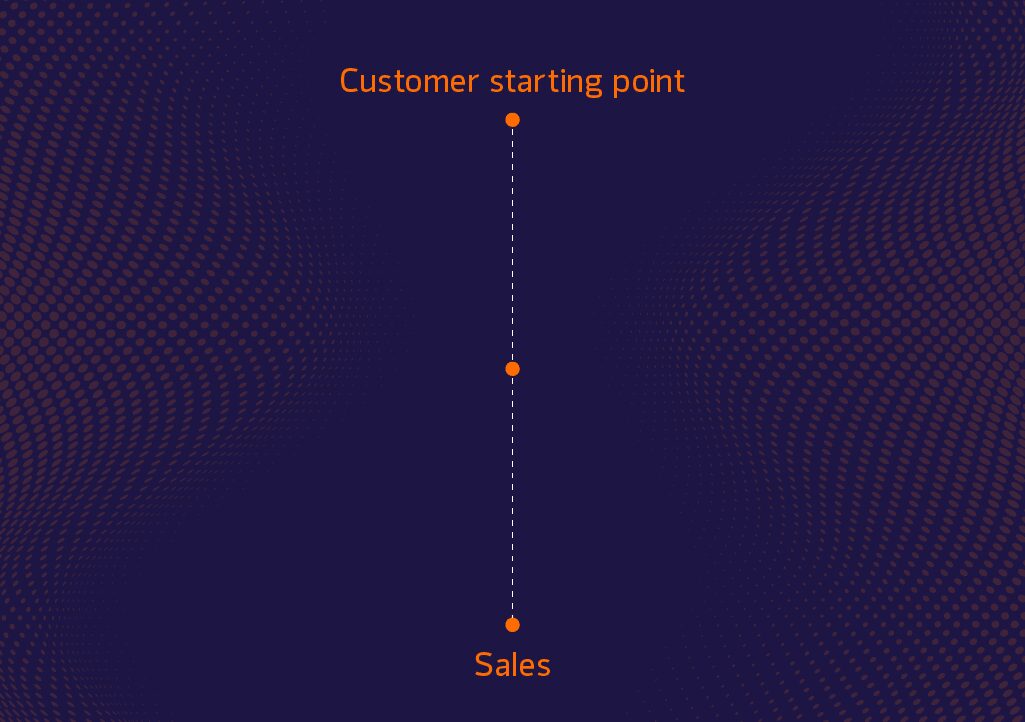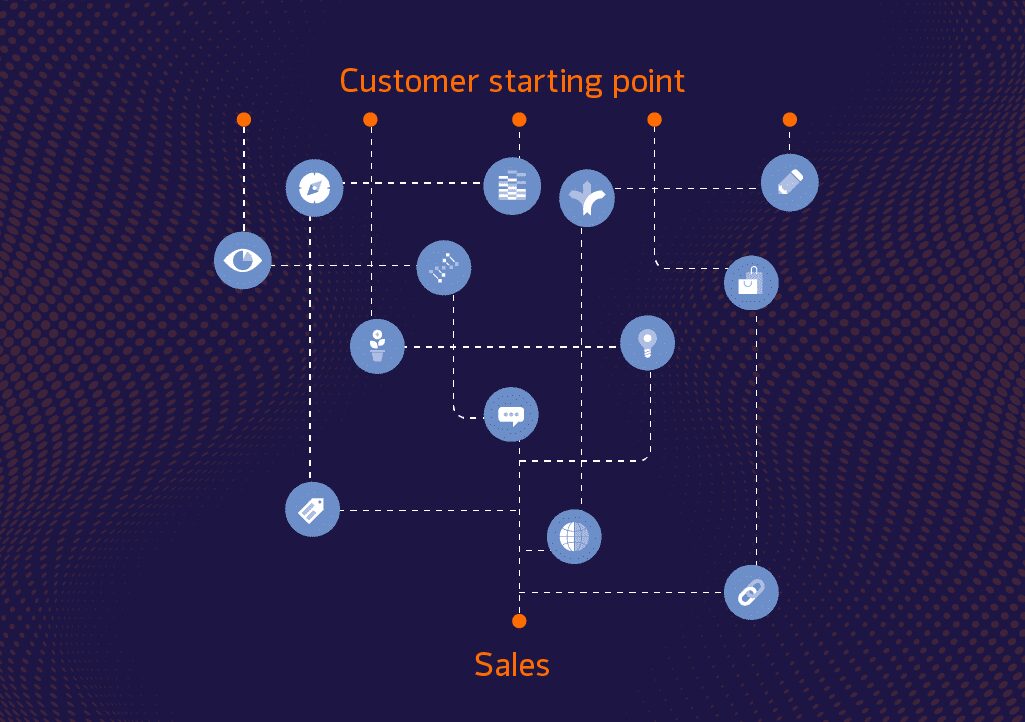Let us paint a picture. The year is 1950, drive-in theatres are the new fad, poodle skirts are in and televisions are accessible to the middle class giving birth to a new emerging consumer culture. 30 second TV advertisements during prime time television hours are the new sole medium to create brand awareness, and brands pay a hefty sum for that one optimum placement. This one sided relationship between advertiser and consumer worked for the era. The flow of information was linear; advertisements were placed in designated locations and consumers took in that information. It was a predictable set of operations. Easy. The customer journey was simply from point A to point B. They saw the advertisement, and bought it if interested. For a brand it was an early utopia.
Let us paint another, very different picture. The year is 2020, advent of technology and the recent pandemic has created unprecedented new ways of coping and operating, both for individuals and businesses alike, a stark distinction from the haven it was for advertisers in the 50’s. The modern consumer now has access to all kinds of information, accessible within seconds through just a tap on a screen. The modern consumer can compare prices, recommend brands to thousands of people online, and hold brands accountable if their consumer experience is not aligned with what the brand had promised. Consumers now demand that brands work to excite them and engage with them for a piece of their collective attention. The customer journey is no longer a linear progression from point A to point B but rather a zig zagging roller coaster with multiple points of entry.
In order to be successful it is imminent that advertisers determine a customer’s potential touchpoints. Touchpoints are places and times where a consumer has come in contact with your product or service, either before purchasing, during purchasing or after purchasing. The number of customer touchpoints have exponentially increased as consumers come into contact with a brand in a myriad of ways ranging from personalised online social media advertisements to digital billboards. The problem however, according to Cisco writer Ms. Venugopalan is that “...many companies are still focusing on individual touchpoints rather than looking at the customer journey as a whole.” A recent study showed that on average consumers use 6 touchpoints when interacting with a brand. This can prove to be disastrous for brands whose efforts are concentrated to market at just one touchpoint.
Firstly, by identifying key touchpoints and moulding the brand’s methodologies accordingly. Due to the new age shift towards a more digital buy and sell experience. Key demographics and targets have shifting touchpoints. This is furthered by immediate accessibility to services and products any time any where, which in turn means immediate accessibility for consumers towards competitors as well. Brands need to identify key touchpoints and optimize it before competitors do.
Secondly and quite crucially, enhancing customer experience and connection. A study conducted by Deloitte identifying seven key marketing trends in 2020 showcases that positive actions by brands have led to 1 in 5 people shifting their buying behavior to support those brands. In contrast, negative brand actions have led to 1 in 4 people walking away from brands that acted in their own self-interest.
If identifying key touchpoints is important then the next most important tactic is to keep customers engaged throughout their customer journey. Brands should want the consumers to be interested in them from the moment they interact with the first touchpoint till they are turned into buyers and clients. Brands should start prioritising their customer experience, not just at a singular part of the journey but throughout several touchpoints.
In this digital muddled world how do you make sure to reach your customers at their touchpoints and optimize these routes for generating new leads and sales? As consumer practices have evolved so have adjacent marketing practices. Especially during the global pandemic of 2020, more and more consumer interactions and sales have gone digital.
Ideally, to meet your customers at their touchpoints, brands would need to plant themselves into the midst of it and opt for digital marketing solutions. A comprehensive digital marketing strategy would provide brands with the ability to place themselves optimally in people’s personalised environments, connecting with your customers through multiple touchpoints via various digital channels, keeping the customer journey ongoing and engaging.
What people think the ideal digital customer journeylooks like
 What the digital customer journey actually
What the digital customer journey actuallylooks like

This is why it is vital to consult with a digital marketing expert who will help you through changing methodologies, robust digital marketing strategies and creative techniques, to tailor a digital customer journey that works for you.
Adapting to the new technological era with shifting marketing practices, such as digital marketing, can make all the difference in attracting the right customers to your brand and increasing brand awareness.
If you are curious and interested to learn more about digital marketing, you can always reach us.

